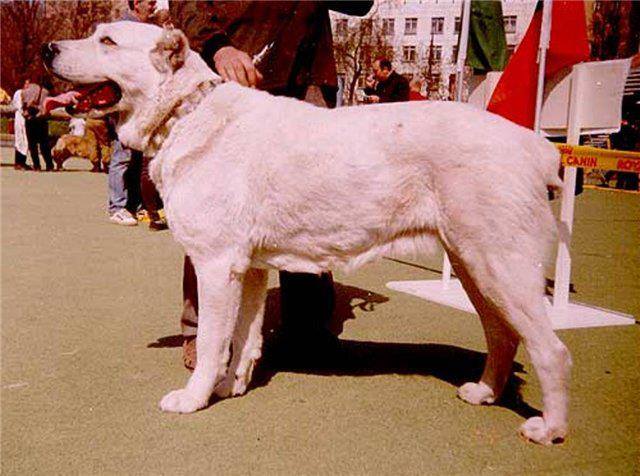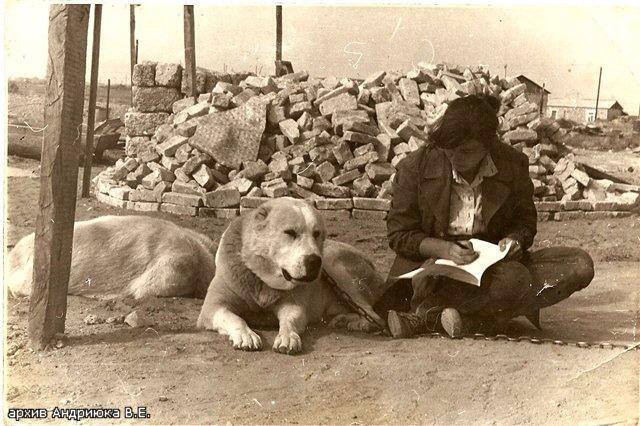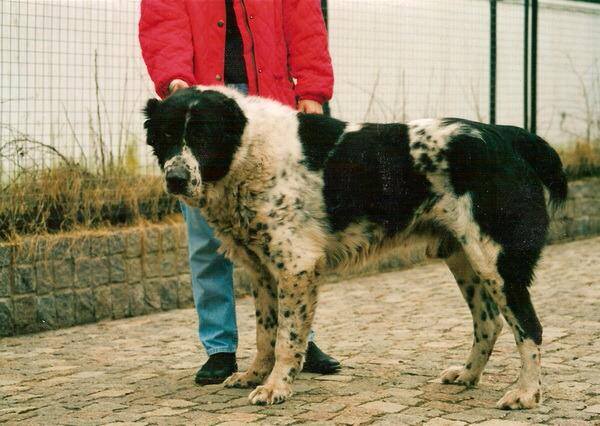TACTICS OF TERRITORY PROTECTION in cas dogs
Question
Should cas be trained with IPI Shutzhund etc?
Answer:
Most of the trainers got into trouble with these dogs: attempts to use sports systems (IPO, SchH, Mondioring, etc.), and work "with a twig and a sleeve" did not lead to anything.
The main postulate of sport dog training: "playful aggression - prey."
CAS are not up to games. Their life cycle is simple and reliable: calm accumulation of energy - hard short fight - calm accumulation of energy. Under no circumstances will they waste their energy on running, barking, and "conquering the rocking chair".
This way of life, using all energy in a matter of seconds of combat in the event of deadly contact with a predator, lasted for millennia.
And he gave the unique character of the Central Asian Shepherd Dog: explosive (unthinkable combinations of lethargy, bordering on phlegmatic look, when owner is nearby and everything is calm, with high-speed reactions that have no analogues in the dog's world, if the enemy approached), extremely balanced (transition from excitement to full calmness takes a fraction of a second!), with a measure of reasonable leeriness, which indicates the highest intelligence. Add to this the love of freedom and stubbornness.
Now imagine a trainer galloping in front of an 8-10 month old Asian with a sleeve.
Firstly, being a big puppy, an Asian at this age is already trying to look like an adult .
Secondly, the Asian plays only when he wishes, decisively not in accordance with the schedule of training classes.
Thirdly, he is not at all inclined to play with unfamiliar people!
Question:_ So play-PRAY method will not work for cas?WHY?
Answer:
With the play method, the trainer stumbles upon an impenetrable wall: either the dog unexpectedly start attacking unprotected parts of the trainer instead of sleeve or, just play a total IDONT know what you want from me role
Faced with such a poor choice, most trainers, until they are accused of unprofessionalism, quickly declare that the dog is not good to be a guard, while not forgetting to take payment for the "work" done. if it is a trainer who running around and pushing sleeve in to dog face non stop, then result can be different:
For the first time, the dog believes in the "enemy" and attack sleeve with rage, because he cannot reach anything else. But for the 3-4th time dog completely refuses to work on sleeve for the following reasons:
1) it is an idiot, not an enemy;
2) this idiot is wearing something;
3) leave me alone, I have a lot to do, and you pester me with stupid things.
But if the leash accidentally breaks off when the trainer is just talking to the owner ... In general, most likely, you will pay the money again for the medical bill and change the trainer to new one.
Very quickly the owner gets tired of it, and the dog will sit in the yard or in a house, confirming the reputation of a "non-working" dog. and dumb breed.
Question
What equipment for decoy practice you would recommend to use if owner want to check natural ability of CAS to protect? How cas in general,do show themselves if they tried with decoy?
If an CAS "tastes" the training equipment - in many cases he will refuse to work! That is why it is so difficult to demonstrate their work in competitions.
For a stable performance in demonstration groups, it is very useful to deliberately make one of the defendants an enemy of the Asian. Then, taking into account the "personal dislike" for him, the dog will demonstrate everything that it is capable of, in any conditions.
Now we come to the most important thing: exactly how the Asian conducts the fight.
No matter how the situation develops (and the dog may be on a tie out leash, simply on a leash and in a free state), certain tendencies and peculiarities are always clearly visible in the work.
1. An Asian always looks into the eyes of the enemy.
This is one circumstance that is most unpleasant for the trainer:he does not know where the dog will attack.
If dogs of other breeds (especially if they were bred and trained to "play" and "prey"!), they stare at sleeve with their eyes (open or hidden sleeve - it does not matter), thereby indicating the place of attack, then Asian - barely look at the sleeve.
Here a very typical situation when an Asian is forced to bite for a certain place at trainer's body.
For example, by placing the dog on a tie out leash, allow dog only to reach the forearm.
When regular shepherds, trained for PLAY AND PREY, starts selflessly "killing" the sleeve or the part of bite suit, the Asian will grab sleeve with his fangs and, looking into the eyes of the enemy, will try to pull the trainer closer to himself
If this maneuver succeeds, then he will immediately release trainers forearm or sleeve ...and attack only he knows - where
For the trainer, this trouble is aggravated by another circumstance.
2. An Asian always “steals” space. Which means that he is inherent in the tactics of choosing the most favorable moment for an attack.
He kind of lures the enemy into "his" territory, leaving the leash sagging, and in a free state - changing the rate of attack, freezing or taking a step to the side. Then - an explosion!
3. Having seized the enemy, the cas always leaves for himself the possibility of a second attack.
To begin with, a cas always seeks to attack a human enemy in the face or neck (br-r-r-r!).
But, having seized any part of the body, except for those named, he tries to knock down the enemy with a terrible jerk-bashing, letting go and grabbing again, but already in a different place.
Therefore, the meaning of the Asian bite is not squeezing, as in the "police dogs", but in a punch with fangs and a jerk to the side. (bite and shake?)
But if the dog got his neck or face he bites to the end ...
4. The Asian always fights in cold blood and attentively, quickly and accurately reacting to the counteractions of the enemy.
What do the so-called Western schools of training preach as the main merit of a dog during a fight?
Grip hold.
If the enemy strikes ? Grip hold.
Regardless of the actions of the enemy - grip hold!
It is presented to us as some of the greatest discovery of the German trainers, as a law not subject to discussion. In fact, the very same German specialists, through the mouth of their "patriarch" Richard Most, declared things that were exactly the opposite of those named.
For us, another thing is important to understand: life itself taught the Central Asian Shepherd Dog prudent explosive combat tactics. A tactic that preserves the dog's mobility and the ability to attack the most vulnerable spot of the enemy.
Why are there two opinions in this simple position?
It's very simple: there are no victims during dog sport shows events, but brainless daredevils do not live long in life!
So what do we have?
1. Obedience to the Central Asian Shepherd Dog must be taught based solely on contact with the owner-leader. This obedience should be exclusive "everyday", manners first.
2. Teaching the Central Asian Shepherd Dog "protection and defense" should be based solely on aggression in the most realistic situations.
3. The tactics of fighting in the Central Asian Shepherd Dog is that it works extremely "smart": hides the distance, breaks the pace, intercepts oncoming attacks or dodges them.
Having chosen the most opportune moment, the dog explodes and decides the outcome of the fight in a matter of seconds, trying to knock the opponent down.
Considering the fact that such behavior in the Central Asian Shepherd Dog is innate, any attempts to impose playing and sports techniques are nothing more than a crime against the breed.
Its recommended to try natural leeriness of cas when dog is mature, have good contact with owner and testing happens at territory where dog do live.
















